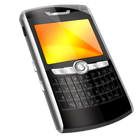Home > Synthesize > ICT in Extension > Cell Phones
Cell phone | Radio | Smart Devices | Social Media | Video and TV | Web - internet
Cell phone | Radio | Smart Devices | Social Media | Video and TV | Web - internet
|
Cell Phones
Cell phones have emerged as a widely available option; providing multiple opportunities for improving communication. Cell phones can be used for
Examples of Use.
Cell phone types
Cell phones can be defined as
Pros
Cell phones are portable, relatively cheap and increasingly available Cell phones have multiple present and potential uses
Key Principles The key ‘enabling factors’ behind the successful introduction of mobile phone-based ICTs in developing country contexts (from Poate 2010) include:
|
Sawbo animated videos delivered on cell phone
|


